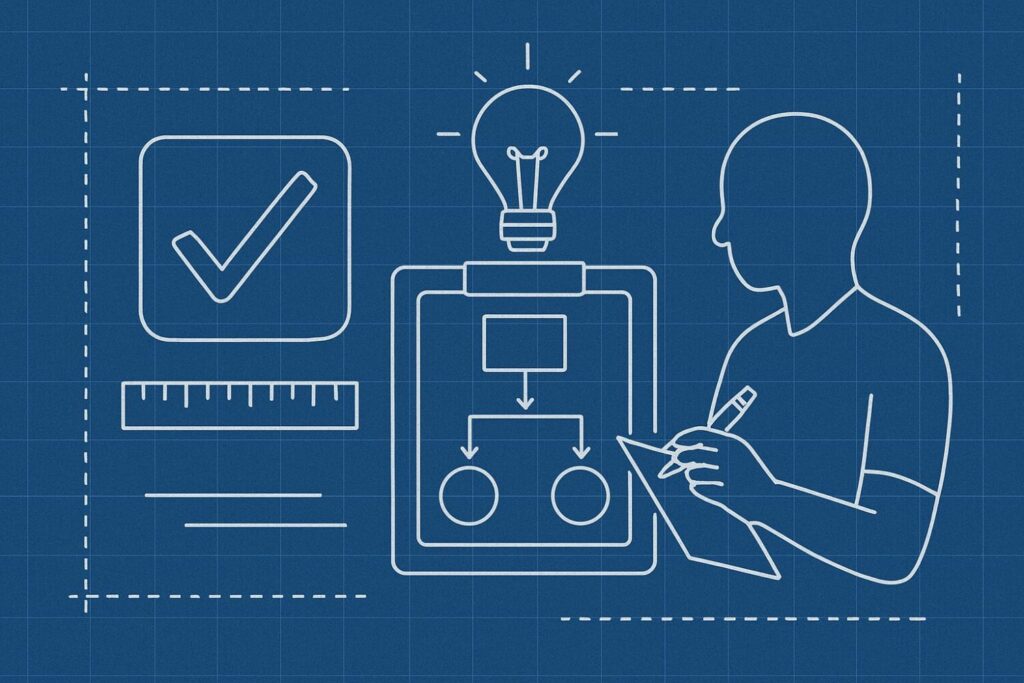→ Tactical Delivery Habits → Define
The Define stage focuses on the creation of a plan. That plan need not be perfect, but its creation must involve all stakeholders and the delivery team.
It’s the second focus of the flexible, scalable Agency Project Delivery Framework.

Critical for:
- Understanding agency commitments
- Maintaining client alignment
- Generating good hours-based estimates
The Define stage begins immediately after the Align stage finishes. It’s not a secret, but equally, the client doesn’t need to be aware of the progression into Define.
That said, at this point the language we use will change. We will now have detailed knowledge of various important elements of a successful project.
The available budget (and likely the available delivery team that allows). What we’re aiming to achieve in terms of impact or metrics. Which members of the client’s team we’ll work with, and various important attributes about them. A shared list of unknowns, questions and risks to be resolved before we Deliver.
Define focuses on the creation of a clear plan which all stakeholders have an opportunity to review, comment on, help improve, and finally agree on.
Our plan can be created on office walls with index card, or digitally, depending on the situation. To get the most from those who attend, it’s recommended to use in-person workshops where possible.
What we’re looking to create as the basis of our plan is similar to a Jeff Patton Story Map, albeit with much more detail.
- Epics / Areas – A high level name for a group of stories
- Stories – An ability we’d like a type of user to be able to achieve. We also use Stories to define chunks of hidden work
- Tasks – Specifics about the work that needs to happen
- Questions – Unknown information
- Risks – Potential for any level of failure
- People – Who needs to be involved
- Effort – The scale of the work to be done
- Tech / Tools – Requirements of the work
- Value – What delivers most valuable
- Priority – What will be delivered first
If that sounds like a lot of information, it is. But every agency project contains elements of all of the above. The key difference is that with other approaches the discussions, and thinking, and course correction happens throughout the project. Right up to the end.
The Agency Delivery Approach Framework front-loads important aspects of planning, alignment, and surfacing of risk.
For the vast majority of agency projects, it’s ok to pin things down early. They’re relatively short compared to business planning and budgetting cycles. Business priorities do not often change during agency projects. New information is discovered during projects, but the majority of factors are already known to the business.
Where projects are of significant length, they are best broken down into smaller phases, each with their own Align, Define, Deliver stage. This significantly reduces the risk of changes in the client’s business derailing the project, or rendering our planning null and void.
Once we have a plan, we share it with our stakeholders. We discuss the questions, and risks and priorities and plans. We work on it until everybody can get on board.
If you’d like a chat about how your agency can get started, or you have questions, send me an email.
Before Progressing
Before a project progresses to Deliver, we must know:
- A plan for the project
- Client acknowledgement that the plan is almost certainly wrong in places
- Everybody onboard with the plan
Related Concepts
- User Story Mapping
- Acceptance Criteria
- Estimation
- Surfacing Risk
- Prioritisation
